How to Use Windows Task Manager to Find Out Why Your PC is Running Poorly
One of the most often questions we get asked is “Why is my Windows computer so slow?”. It’s a simple question and many times there are no easy answers. But there is one tool you can use that can help you determine PC is running so slow and that’s Windows Task Manager.
You can open Windows TaskManager in any version of Windows by using the keyboard shortcut CTRL+SHIFT+ESC. Or right-click on the Start button and click “Task Manager”.
Today, we’re going to use Windows 11’s Task Manager for this tip – but don’t worry, if you’re using Windows 10 we’ve got you covered as well.
The default view for Task Manager in Windows 11 is the Processes view – that’s fine because looking at all the running processes can give you a good idea of where all your computer’s resources are going.
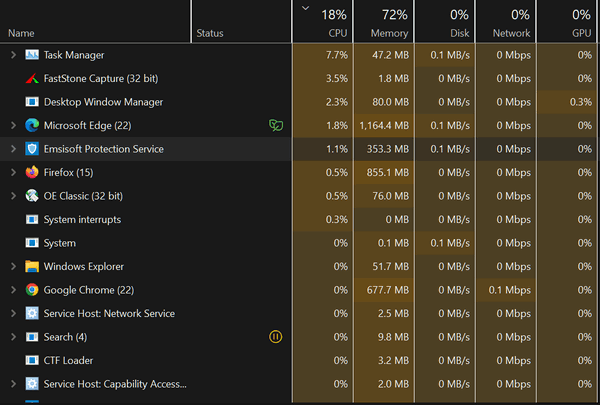
So, let’s see what’s going on with my PC at this early hour of the morning. My computer is running well right now even though I’m using up 72% of my 12 GB of RAM because I’m lazy and have three browsers open with lots of tabs open plus each browser has some extensions installed.
As you can see from the screenshot below Microsft Edge is using up over a gigabyte of RAM (memory), Firefox is consuming nearly a gigabyte, and Chrome over half a gigabyte of RAM. Those three browsers are consuming about 2.5 GB of RAM. It’s a good thing I have 12 GB of RAM or my computer may not be running very well. If I had only 4 GB of RAM my computer would be slow or may even stop responding.
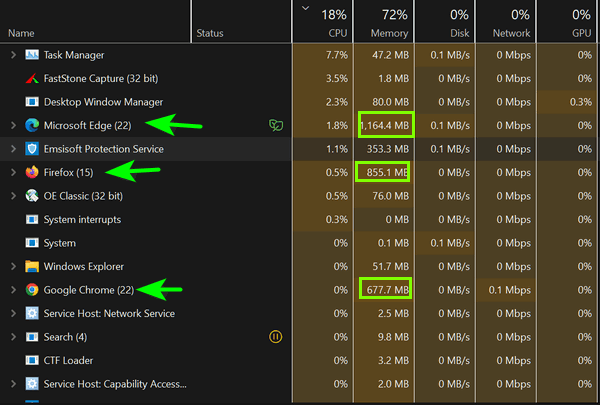
Other important columns you should look at when diagnosing your slow PC are CPU and Disk (activity). We’ve seen computers that show 100% CPU or 100% disk activity that are barely responding. Task Manager will show you how much CPU and RAM are being used and how high the Disk (activity) is – and will show you which process or processes are using the most.
If you want to change the order in which the processes using the most RAM, CPU, or Disk activity are displayed, just click on the column name at the top. In the screenshot below, I’ve ordered the “Memory” (RAM) column from the processes using the most memory (RAM) to the processes using the least. See?
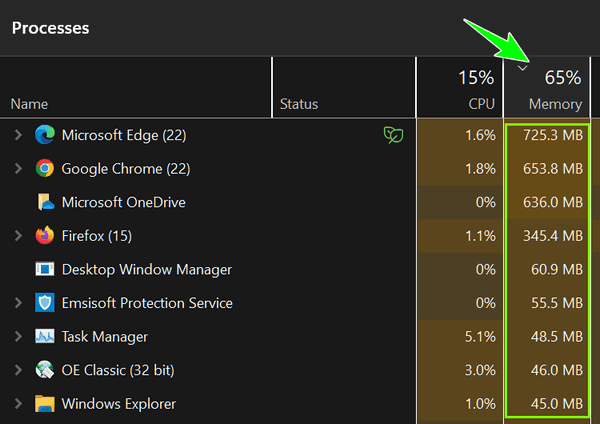
You can easily see from the screenshot above that Microsoft Edge, Firefox, and Google Chrome are gobbling up the most RAM. But remember, you can change the order of any of the columns, CPU, Disk, etc. to show the processes using the most at the top.
By using Task Manager in this way, you can find out which processes are using up your resources and causing your computer to run poorly.
So, if you’re computer is running the way it should, Task Manager can be an important tool to help you find out why your computer is running so poorly.
If you’re using Windows 10…
And, there’s not much difference in how Task Manager works in Windows 10, it’s basically the same if you’re using it to diagnose PC troubles. But here’s something you need to know. Windows 10’s Task Manager does not show details in its default view, but that’s easily remedied.
If you open Task Manager in Windows 10 and find it looking empty or a bit sparse, just click on “More details” at the bottom, and Task Manager will show you all the details that you see in the Windows 11 Task Manager.
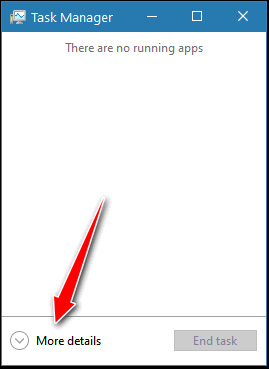
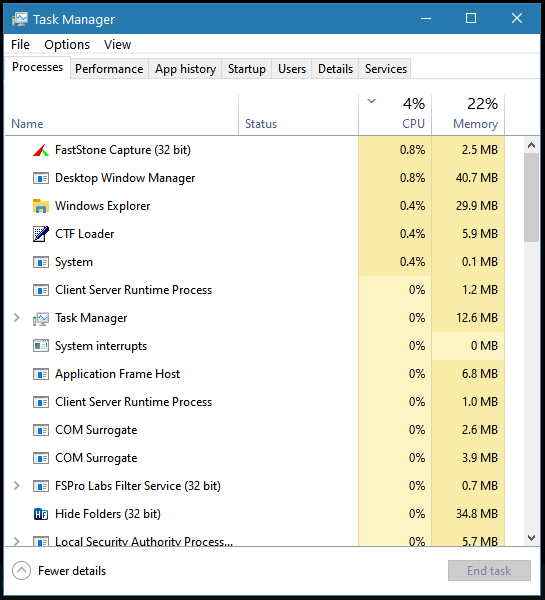
Wait! Before you go…
Every week we help dozens of people with their computers without charge or any expectation of payment. And we have helped many folks who have fallen for tech support scams or other scams designed to steal their money.
And we now depend more on readers like you to help keep us going. Your donation helps us to help more people with their computers and helps us keep everyone safer online.
Please help support our small business and help us to keep on helping you.


